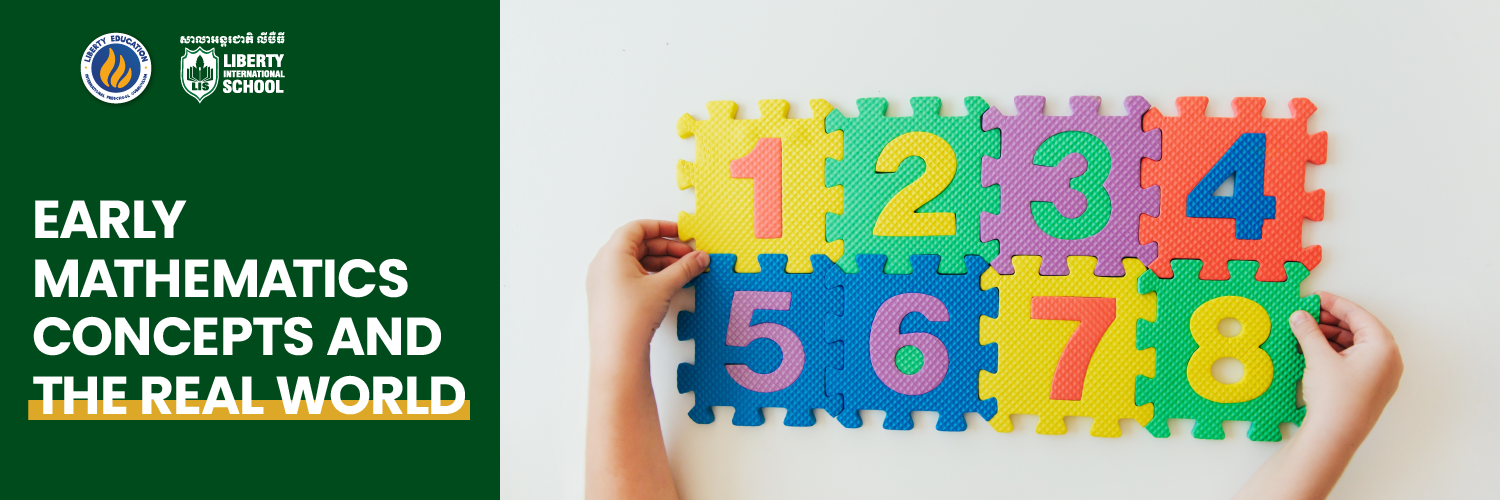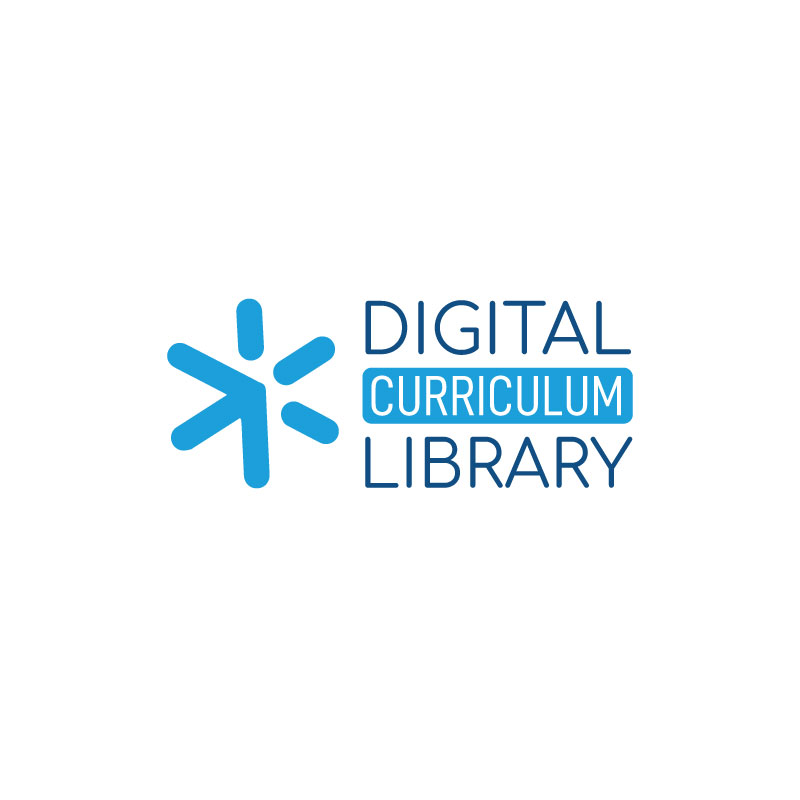Teaching Early Math Skills to Preschool-age Kids
និយមន័យដ៏ខ្លីនៃលេខកម្រិតដំបូង៖

លេខកម្រិតដំបូងសំដៅទៅលើ ជំនាញមូលដ្ឋានគណិតវិទ្យា និងគំនិតដែលកុមារអភិវឌ្ឍន៍កំឡុងពេលដើមឆ្នាំរបស់ពួកគេជាទូទៅមុនពេលចូលរៀនជាផ្លូវការ។ វារួមបញ្ចូលជាមួយនិងសមត្ថភាពជាច្រើនរួមាន ការយល់ដឹងអំពីលេខ ការរាប់ចំនួនលេខ ការទទួលស្គាល់បរិមាណ ការប្រៀបធៀប ទំហំ រូបរាង និងលំនាំ ហើយនិងជំនាញមូលដ្ឋានដោះស្រាយបញ្ហា។ លេខកម្រិតដំបូងផ្ដល់អោយនូវគ្រឹះដ៏រឹងមាំសម្រាប់សមត្ថភាពនៃការយល់ដឹងគណិតវិទ្យានៅពេលក្រោយ។ ជំនាញទាំងនេះ គឺជាមូលដ្ឋានគ្រឹះសម្រាប់យល់ពីគណិតវិទ្យានិងជោគជ័យនាពេលអនាគត។
ទាំងនេះមានវិធីសាស្ត្រជាច្រើន ដែលអាចប្រើដើម្បីបង្រៀនគណិតវិទ្យាថ្នាក់មត្តេយ្យសិក្សានិងជំនាញគណិតវិទ្យាដល់កុមារនៅដើមឆ្នាំដំបូង។ ឧទាហរណ៍មួយចំនួនត្រូវបានរកឃើញនៅពីខាងក្រោម។ ហើយពួកគេភាគច្រើនត្រូវបានបញ្ចូលមុនទៅក្នុងកម្មវិធីមត្តេយ្យសិក្សារបស់ លីបឺធី នៅពេលដែលកុមារនីមួយៗរៀនវីធីផ្សេងៗគ្នា។
ដូច្នេះ ដោយការបញ្ចូលវិធីសាស្ត្រផ្សេងៗសមស្របតាមវិធីសាស្ត្រមួយទៅនិងកម្មវិធីសិក្សាជាក់លាក់មួយ។
នេះគឺជាវីធីមួយចំនួនដើម្បីបង្រៀនជំនាញគណិតវិទ្យាដំបូងមត្តេយ្យសិក្សាកុមារនៅវ័យក្មេង៖
- បទពិសោធន៍ជាក់លាក់៖ ផ្ដល់នូវសកម្មភាព និងបទពិសោធន៍ដែលអនុញ្ញាតអោយកុមារមានភាពប្រាស្រ័យទាក់ទងខាងផ្នែករាងកាយជាមួយនិងការគិត គណិតវិទ្យា។ ឧទាហរណ៍ ពួកគេអាចប្រើប្រាស់ដូចជា បំណែក ឬក៏រាប់ចំនួនវត្ថុដើម្បីយល់ដឹងពីគំនិតនៃបរិមាណ ការរាប់ចំនួន ហើយនិងមូលដ្ឋាននៃការអនុវត្តន៍។
- វិធីសាស្ត្រផ្ដល់នូវរូបភាពជាក់ស្ដែង៖ អនុវត្តតាមវិធីសាស្ត្រផ្ដល់នូវរូបភាពជាក់ស្ដែងដែលពាក់ព័ន្ធនិងបីដំណាក់កាលនៃការសិក្សារៀនសូត្រ។ នៅក្នុងដំណាក់កាលពិតប្រាកដមួយកុមារប្រើប្រាស់រូបរាងវត្ថុដើម្បីមានគំនិតយល់ដឹង។ នៅក្នុងដំណាក់កាលរូបភាព ពួកគេធ្វើការផ្លាស់ប្ដូរគំនិតនៃរូបភាពតំណាងឬក៍គំនូរ។ ចុងក្រោយនៅក្នុងដំណាក់កាលនិមិត្តសញ្ញា ពួកគេអាចធ្វើការជាមួយនិងលេខ និងនិមិត្តសញ្ញារបស់វត្ថុដែលគ្មានរូបរាង ឬក៍រូបភាព។
- មូលដ្ឋានរៀនកំឡុងពេលលេង៖ បញ្ចូលគណិតវិទ្យាទៅក្នុងសកម្មភាពពេលលេង កុមារអាចរៀនមុខវិជ្ជាគណិតវិទ្យាតាមរយៈការការលេងហ្គេម ការផ្គុំរូបភាព និងបទពិសោធន៍ជារៀងរាល់ថ្ងៃ។ ឧទាហរណ៍ ពួកគេអាចលេង ជាមួយនិងការផ្គុំរូបរាង ហ្គេម ដូចជាការប្រើប្រាស់ដូចជាបំណែក ការរាប់ចំនួន និងផ្សាភ្ជាប់ជាមួយនិងសកម្មភាពដោះស្រាយបញ្ហា។
- 4.សកម្មភាពជាប់ពាក់ព័ន្ធ៖ ផ្សាភ្ជាប់កុមារទៅនិងសកម្មភាពជាប់ពាក់ព័ន្ធ លើកកម្ពស់ការគិតគណិតវិទ្យានិងដោះស្រាយបញ្ហា។ នេះអាចរួមបញ្ចូលការវាស់ស្ទង់វត្ថុដោយមិនប្រប្រាស់ខ្នាតស្តង់ដារ ការស្វែងរក លំនាំ រូបរាង ការតម្រៀប និងការចាត់ថ្នាក់វត្ថុ និងការស្វែងរកទំនាក់ទំនងកលំហរ។
- ពាក្យគន្លឺះគណិតវិទ្យា៖ ណែនាំអំពីពាក្យគន្លឺះគណិតវិទ្យា រួមបញ្ចូលជាមួយនិងគំនិតកំឡុងពេលការលេងនិងសកម្មភាពប្រចាំថ្ងៃ។ ប្រើប្រាស់ពាក្យគណិតវិទ្យា ដូចជាពាក្យ ច្រើនជាង តិចជាង ធំជាង តូចជាង វែងជាង ខ្លីជាងជាដើម។ ជម្រុញអោយកុមារប្រើប្រាស់ពាក្យទាំងនេះនៅពេលពិពណ៌នា ប្រៀបធៀបវត្ថុ និងបរិមាណ។
- 6.ការស្គាល់ និងការរាប់ចំនូនលេខ៖ ណែនាំចំនួនលេខ និងរាប់លេខតាមលំដាប់។ ចាប់ផ្ដើមជាមួយនិងការរាប់ចំនួនកន្លែងដែលកុមារបានរៀនគណនាចំនូនលេខឡើងវិញតាមលំដាប់លំដោយ។ បន្ទាប់មកសូមបន្តរាប់ចំនួនវត្ថុ និងចំនួនលេខដែលស្គាល់។ ប្រើប្រាស់សម្ភារៈផ្សេងៗដូចជា ឧបរណ៍ក្មេងលេង ការហៅឈ្មោះលេខ ឬរូបភាពផ្សេងៗដើម្បីធ្វើអោយសកម្មភាពដែលពាក់ព័ន្ធមានន័យ។
- 7.ភាសាគណិតវិទ្យា និងចម្រៀង៖ បង្រៀនបទចម្រៀងនិងចង្វាក់នៃការរាប់លេខដែលជួយអោយកុមារយល់ច្បាស់ពីការគិត លំនាំ ចំនួនលេខតាមលំដាប់លំដោយ។ បទចម្រៀងទាំងនេះអាចជួយពង្រឹងជំនាញរាប់ចំនួន និងណែនាំពាក្យគន្លឺះគណិតវិទ្យា។
- កម្មវិធីជីវិតពិត៖ ផ្សាភ្ជាប់គណិតវិទ្យាទៅស្ថានភាពនិងបទពិសោធន៍ជីវិតពិត។ តម្រូវអោយកុមារចម្អិតម្ហូបអាហារ ការដុតនំ វាស់គ្រឿងផ្សំ ឬរាប់ចំនួនវត្ថុជាប្រចាំ។ ពិភាក្សាអំពីគំនិតដូចជា ពេលវេលា លុយ ទំហំ និងលក្ខខណ្ឌនៅក្នុងការគណនា។
- ផលិតភាព និងបរិយាកាសគាំទ្រ៖ បង្កើតបរិយាកាសវិជ្ជមាននិងគាំទ្រដែលកុមារមានអារម្មណ៍ថាត្រូវបានលើកទឹកចិត្តនៅក្នុងការស្វែងរក និងផ្សាភ្ជាប់ជាមួយនិងគណិតវិទ្យា។ ផ្ដល់នូវការកោតសរសើរនិងលើកទឹកចិត្តចំពោះការប្រឹងប្រែងរបស់ពួកគេ ហើយអនុញ្ញាតអោយពួកគេធ្វើនូវកំហុសដែលពួកគេរៀន។
សូមចងចាំថា កុមារម្នាក់ៗមានការអភិវឌ្ឍន៍តាមល្បឿនរបស់ខ្លួនពួកគេ ដូច្នេះសូមផ្ដល់ឪកាសនៃការសិក្សាជាលក្ខណៈបុគ្គល និងធានាបានថាសកម្មភាពទាំងនោះសមស្របទៅនិងអាយុ និងមានភាពរីករាយសម្រាប់ថ្នាក់មត្តេយ្យសិក្សា។
____________________
- Early numeracy refers to the foundational mathematical skills and concepts that children develop during their early years, typically before formal schooling. It encompasses a range of abilities, including understanding numbers, counting, recognizing quantities, comparing sizes, shapes, and patterns, and basic problem-solving skills. Early numeracy skills provide the building blocks for later mathematical understanding and proficiency. These skills lay the foundation for future mathematical understanding and success.
- There are many methods that can be employed to teach pre-math and math skills to early years kids. Some examples are found below. And many of these are incorporated into Liberty’s preschool curriculum as each child learns in a different way. Thus, by incorporating various methods once can tailor an approach to a particular learning style.
Here are some ways to teach early math skills to preschool-age kids:
1. Concrete experiences: Provide hands-on activities and experiences that allow children to physically interact with mathematical concepts. For example, they can use manipulatives like blocks or counting objects to understand concepts of quantity, counting, and basic operations.
2. Concrete-pictorial-abstract approach: Follow the concrete-pictorial-abstract approach, which involves three stages of learning. In the concrete stage, children use physical objects to understand concepts. In the pictorial stage, they move to representing concepts with pictures or drawings. Finally, in the abstract stage, they can work with numbers and symbols without physical objects or pictures.
3. Play-based learning: Incorporate math into play activities. Children can learn mathematical concepts through games, puzzles, and everyday experiences. For instance, they can play with shapes, build puzzles, use manipulatives like blocks or counters, and engage in problem-solving activities.
4. Hands-on activities: Engage children in hands-on activities that promote mathematical thinking and problem-solving. This can include measuring objects using non-standard units, exploring shapes and patterns, sorting and classifying objects, and exploring spatial relationships.
5. Math vocabulary: Introduce mathematical vocabulary and concepts during daily interactions and play. Use mathematical terms like more, less, bigger, smaller, longer, shorter, and so on. Encourage children to use these terms when describing and comparing objects or quantities.
6. Number recognition and counting: Introduce numbers and counting gradually. Start with rote counting, where children learn to recite numbers in order. Then, move on to counting objects and recognizing numerals. Use various materials like number tiles, toys, or pictures to make counting activities engaging and meaningful.
7. Mathematical language and songs: Teach counting songs and rhymes that help children understand numerical concepts, patterns, and sequencing. These songs can reinforce counting skills and introduce mathematical vocabulary.
8. Real-life applications: Connect math to real-life situations and experiences. Involve children in cooking, baking, measuring ingredients, or counting everyday objects. Discuss concepts like time, money, shapes, and measurements in context.
9. Positive and supportive environment: Create a positive and supportive environment where children feel encouraged to explore and engage with math. Offer praise and encouragement for their efforts and allow them to make mistakes as they learn.
Remember that each child develops at their own pace, so provide opportunities for individualized learning and ensure that the activities are age-appropriate and enjoyable for preschoolers.
